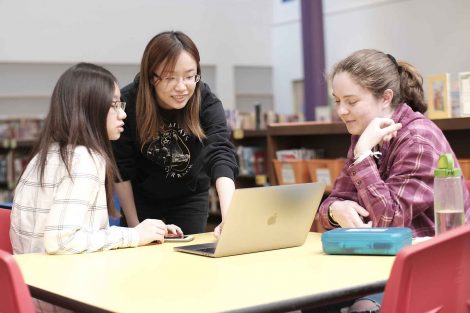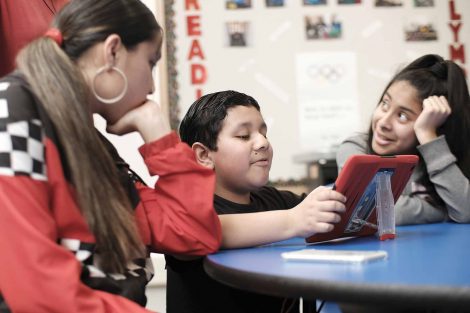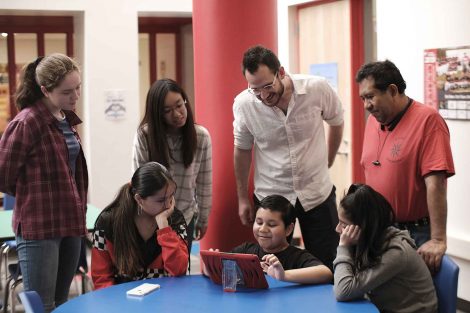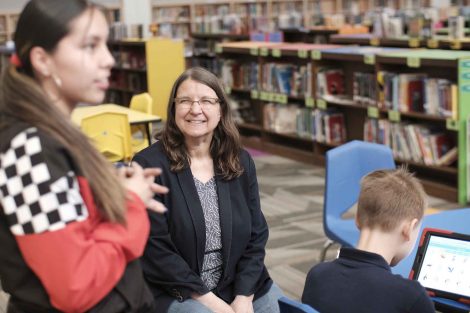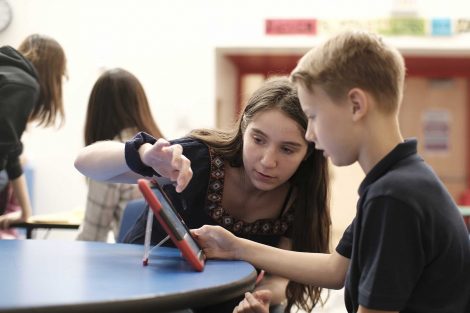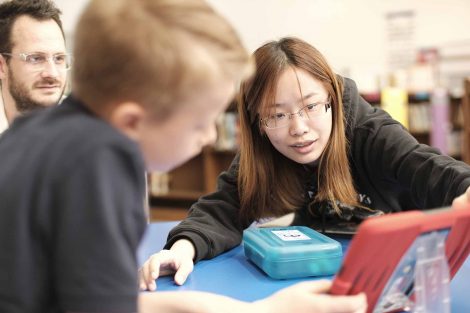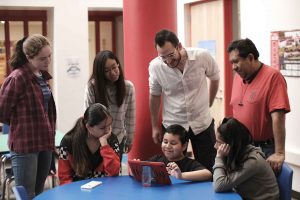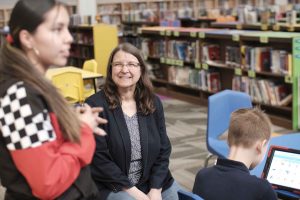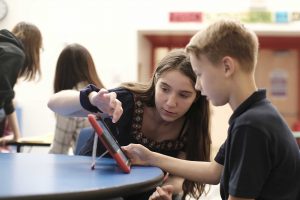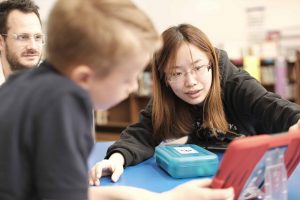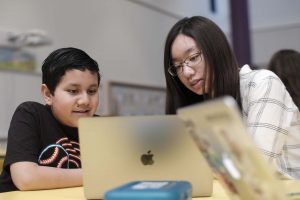Computer science after-school program brings coding to elementary students
By Stephen Wilson
An astronaut and monster are having a polite conversation. After the astronaut rockets off, the monster eats a big bowl of cheese puffs.
This is an example of fun a third-grader will have when given the tools to code an animated story.
A cart of iPads charge in docking stations in the colorful library at Paxinosa Elementary. Sitting in red chairs are several young women who lead Girls Who Code and Kids Who Code after-school programs for third-, fourth-, and fifth-graders. Two faculty advisers, seated in yellow chairs, talk about projects.
All are gathered for the final night as participants bring their parents to share what they have learned and made.
Miguel, one of 20 kids in the program, is with his dad and two sisters. He beams as he demonstrates a few of his coding projects, like a duck that moves around a fruit jungle; users get points as they tap the duck and bonus points when the bird touches fruit.
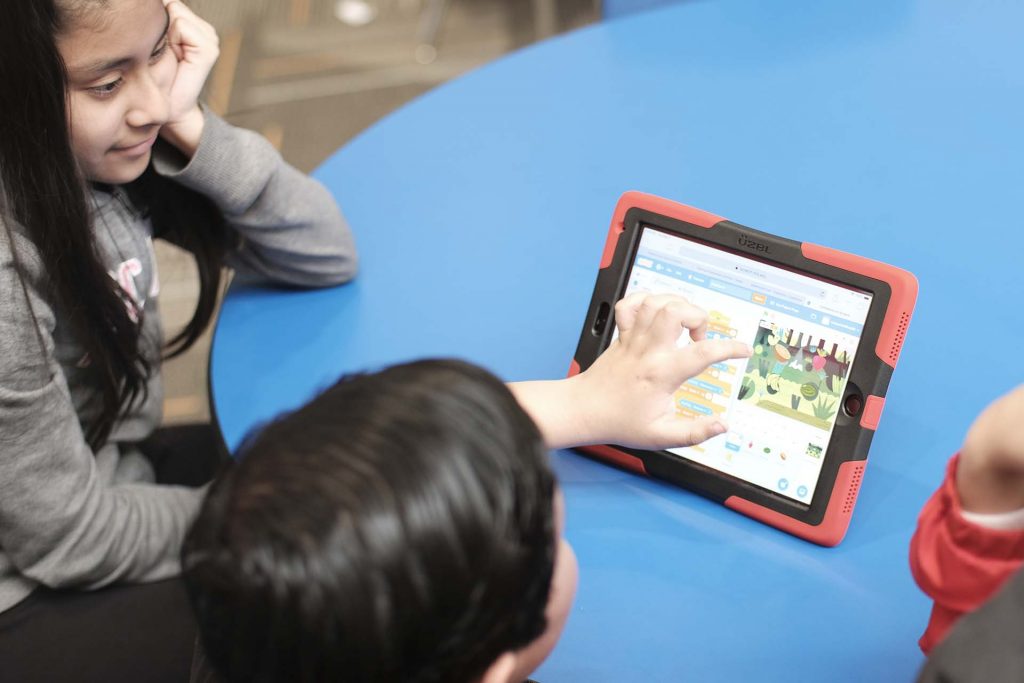 Students have worked in an MIT-developed platform called Scratch that allows young coders to select pre-coded actions in order to assemble a game or story.
Students have worked in an MIT-developed platform called Scratch that allows young coders to select pre-coded actions in order to assemble a game or story.
Lafayette students have anchored the after-school program with lessons as they begin each week’s program with coding history, famous coders, coding concepts, and practice exercises.
An informal program began a year ago with Landis Center for Community Engagement support at Easton Public Library.
Then Tom Collins, visiting assistant professor of computer science, met with partners at Easton Area School District, who helped connect him to the Community in Schools program at Paxinosa—one of the support agencies as part of the United Way Community Schools initiative in Easton, which helps level the playing field for schools where students face more barriers to success.
“I was so inspired after meeting some Girls Who Code members at a conference that I wanted to continue to help bring women into this often male-dominated field,” says Collins.
The library program was transformed into an official Girls Who Code club in January 2019. The Paxinosa program focused exclusively on young women for two months before opening its doors to all participants.
“We worked together with the school to create a space for girls but also open the program to all,” adds Collins.
Soon Rebecca Pantano ’21, Mengjie Wang ’20, Xiashi Wang ’19, and Danielle Mullan ’22 are showing their college projects to participants, including a solution to measure beehive activity for two apiary clients.
“Seeing students share their knowledge helps to break down barriers and create more opportunities for people who are interested in computer science but may feel intimidated as they come to college and lack experience,” says Joann Ordille, assistant professor of computer science.
This seems a code for success.
 Students have worked in an MIT-developed platform called
Students have worked in an MIT-developed platform called 